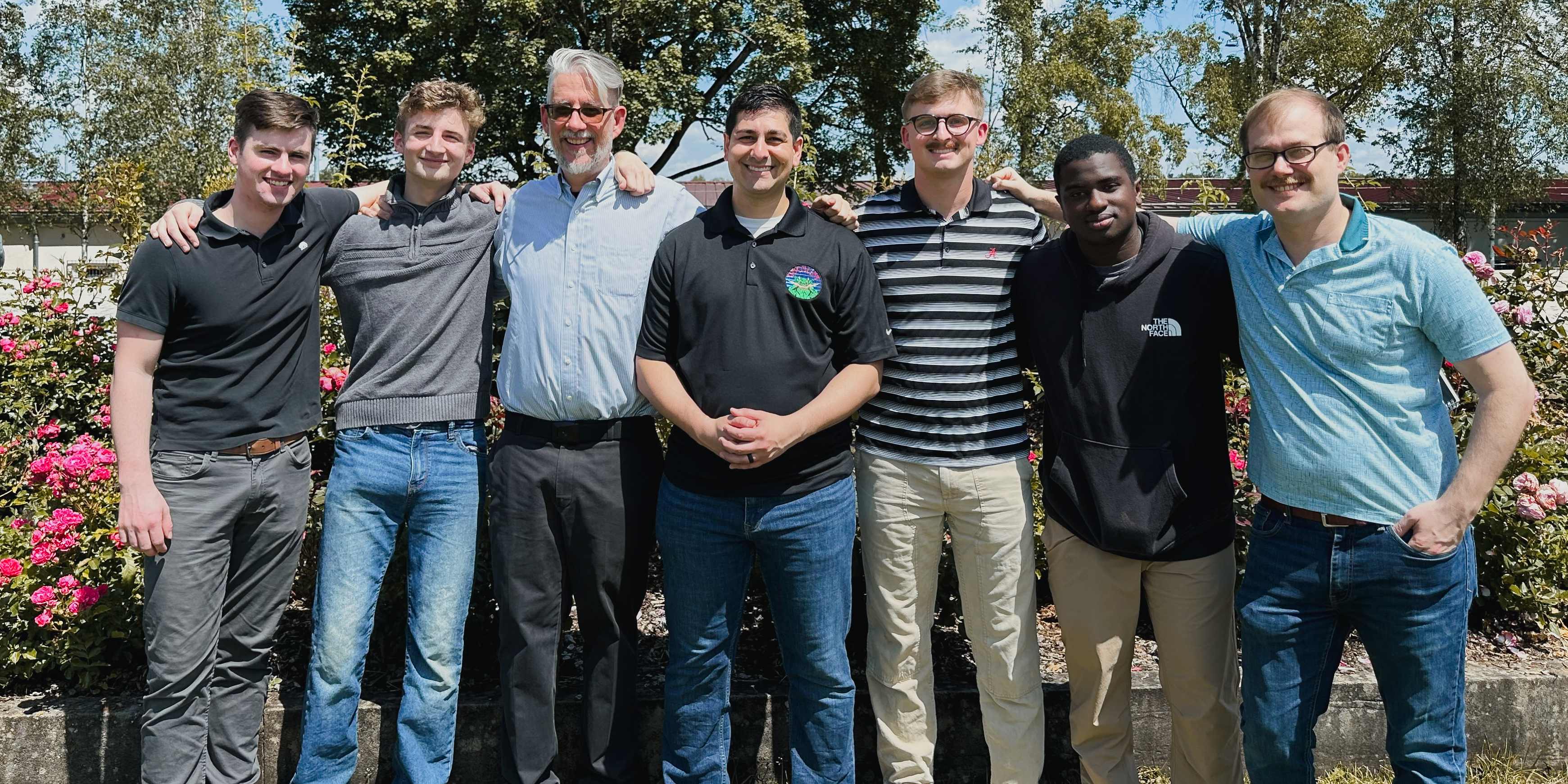BRAVO 101 Hackathon: Sparking Innovation and Collaboration

From
left to right: 2nd Lt. Josiah Stearns, Airman 1st Class Noah Wilhelm, Dr. Don Davis, Maj.
Anthony Rose, 1st Lt. Jared Haynie, Senior Airman Aaron Holmes, Tech. Sgt. Derrick McDowell. (AFIT students in bold. Contributed photo.)
Stuttgart, Germany became a hub of military innovation during the BRAVO 101 (pronounced ‘5’) Hackathon on June 3-7. Hosted by the United States European Command (EUCOM), the event brought together 120 participants across 22 teams from various services, dedicating a cumulative 7,500 hours to tackle pressing challenges in military systems.
Mission and Vision
The BRAVO mission is designed to enhance the integration of effects chain initiatives with existing recorded and live data on military systems. This involves identifying problems and formulating solutions. The hackathon's primary goals were to build collaboration capabilities, spark innovation, and enable disruptive military concepts. Participants included a mix of American and coalition partner federal employees, defense industrial base personnel, commercial companies, and citizens, all working together to tackle tough cybersecurity challenges for the Department of Defense.
Innovation at the Forefront
One of the standout projects was MALWARE (Malware Artificial Learning Workstation Analysis Recommendation Engine), comprising two malware experts from The Air Force Institute of Technology, 2Lt. Josiah Stearns and Maj. Anthony Rose, and three enlisted members of the USAF, along with a USMC officer. The team won the prestigious Hacker’s Choice Award and were coined by EUCOM Chief of Staff, Maj. Gen. Peter B. Andrysiak Jr., and SAF/CN, Office of the Chief Information Officer, Ms. Venice M. Goodwine (SES).
Groundbreaking Results
The project aimed to develop methods for automated categorization of malware samples and provide visual aids for the initial identification of malicious binaries. By leveraging Abstract Syntax Tree (AST) to network analysis of function call graphs, the team managed to handle a dataset of 25,000 executable binary samples with impressive accuracy rates of 99% for distinguishing between malware and benign files, and 94% in identifying specific malware categories.
Future Directions
The findings suggest that despite the structural similarities among different malware families, there is a substantial potential for enhancing the categorization capability through dynamic analysis, especially for highly obfuscated samples. The team's delivered solutions include robust categorization tools and improved visualization techniques, which are set to significantly advance the Department of Defense's approach to cyber threats.
The BRAVO 101 Hackathon not only highlighted the importance of a collaborative and innovative approach to national security challenges but also set the stage for future advancements in military technology and cybersecurity. The commitment to employing a Whole-of-Nation strategy was evident, as participants worked across various classifications and levels of clearance, promoting a unified effort to bolster defense capabilities.


Above: A screenshot of the MALWARE project and the ROHKOST Dashboard that sifts through data to choose which parts to analyze further.